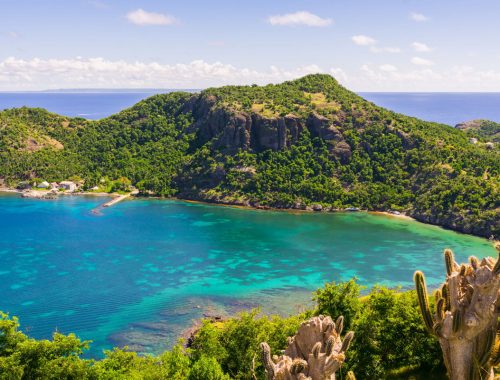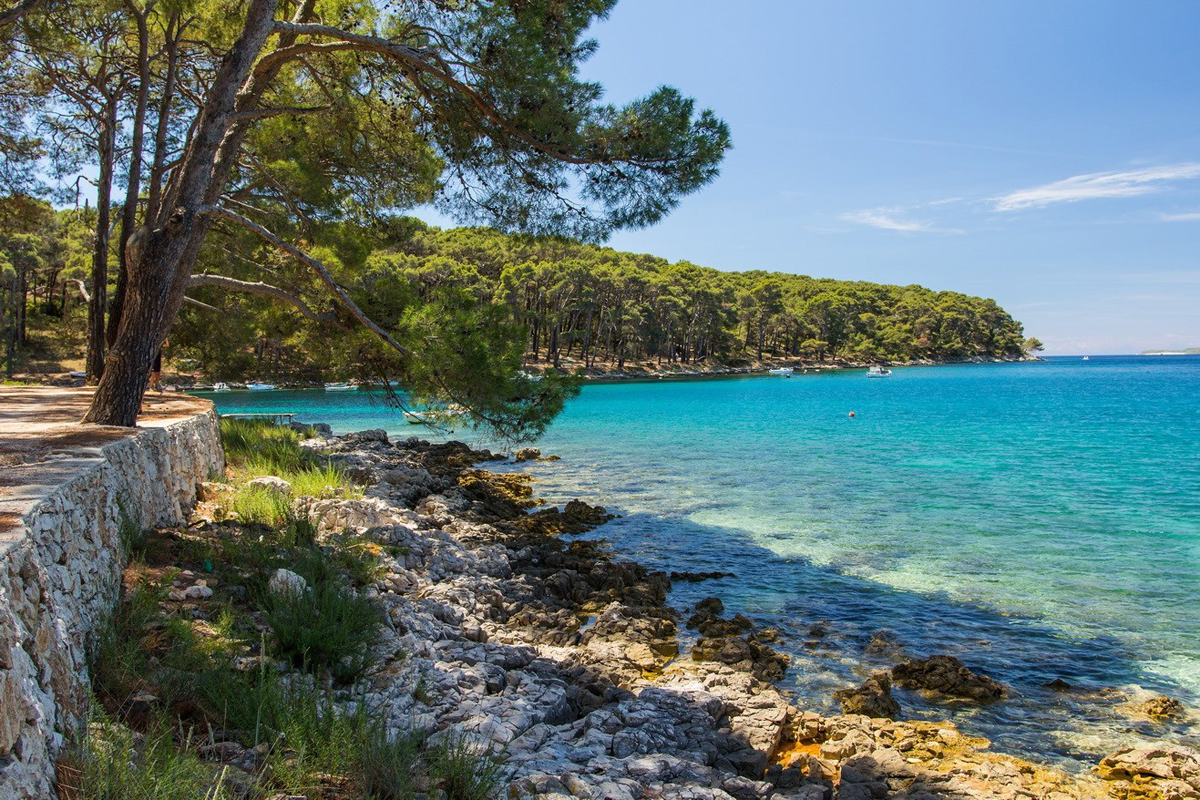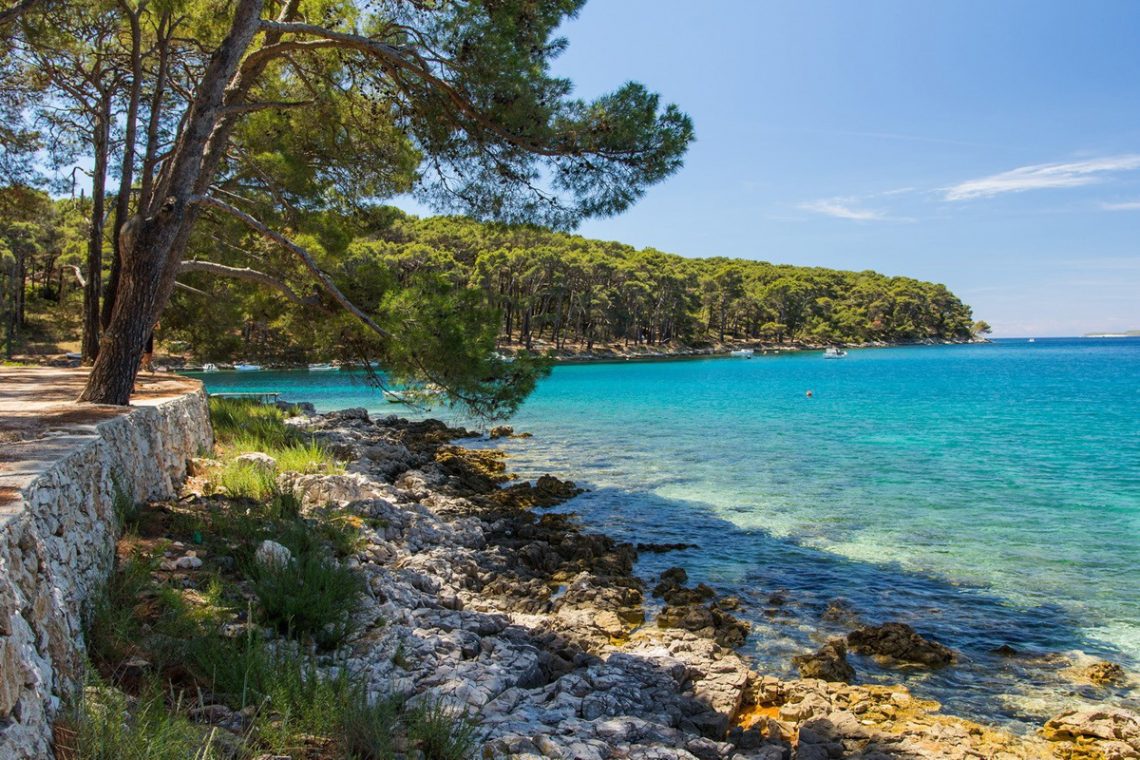
Sailing along the coasts of Slovenia and Croatia: magical and rich in history
Sailing along the coasts of Slovenia and Croatia is a wonderful experience, allowing you to explore breathtaking landscapes, visit historic towns like Piran with its Venetian architecture, and discover charming fishing villages with a relaxed atmosphere. Above all, you can enjoy pebble beaches and hidden bays opening onto crystal-clear waters.
The coasts of Slovenia and Croatia also offer a rich Mediterranean cuisine, with fresh fish, seafood, local vegetables, and excellent wines. Each place has restaurants and taverns serving local specialties that will delight sailors’ palates. Both countries also feature numerous modern and well-equipped marinas offering all necessary services, including supplies and repairs. Let’s set off on a 7-day itinerary starting from the Slovenian town of Izola, reaching the first islands of the Kvarner archipelago in Croatia.
Discover the best boat rental deals
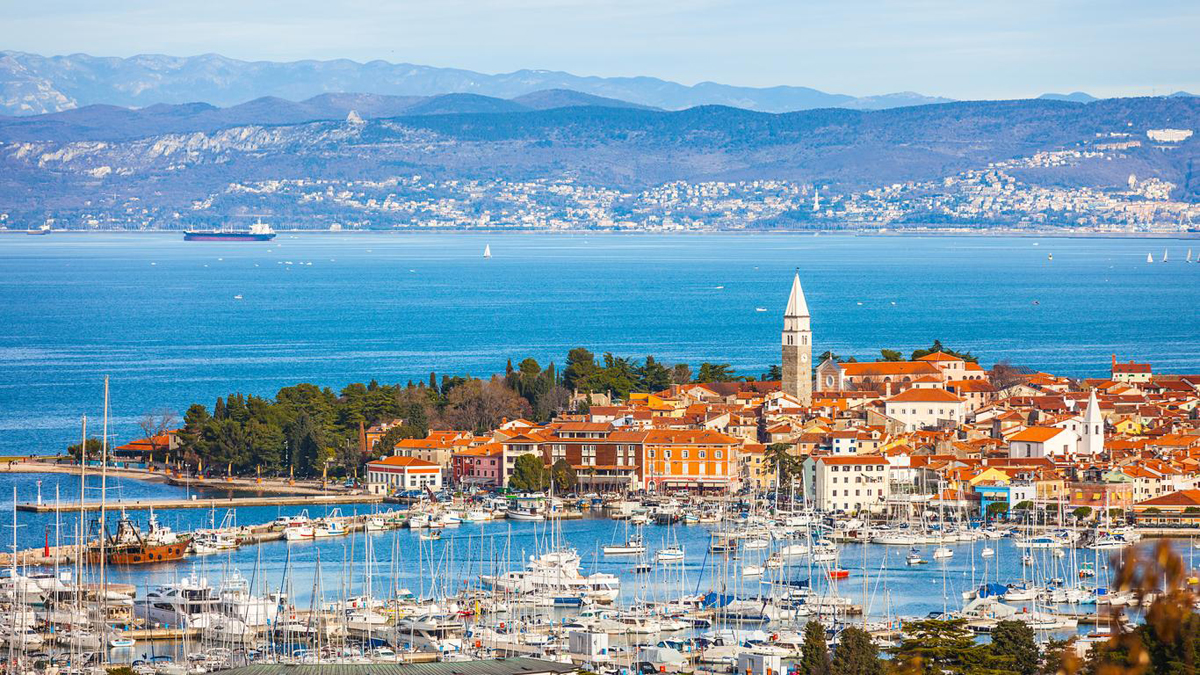
Day 1: Izola – Piran, 7 nautical miles
Our cruise begins in Izola, a picturesque coastal town located on the Slovenian coastline between Piran and Koper. The town is characterized by ancient streets, seafront restaurants, pebble beaches, and numerous buildings dating back to the Venetian era. It has a gentle and peaceful atmosphere that will win you over immediately. The beautiful marina, located south of the old town, accommodates 700 berths for boats up to 40 meters. Nearby, the old town is worth exploring. The Church of St. Maurus, with its impressive bell tower, offers spectacular panoramic views over the gulf. The Maritime Museum is also interesting, recounting the region’s nautical history with exhibits ranging from ancient ships to modern fishing boats. Notable historic buildings include Venetian Gothic-style landmarks such as Palazzo Manzioli (1470) and Palazzo Bensenghi degli Ughi (1775).
Sailing from Izola, after a couple of hours, we reach Piran, one of Slovenia’s most picturesque towns. Its delightful old town features a small harbor, narrow stone-paved streets, pastel-colored houses with Venetian influences, arcades, and beautiful little churches, making it a true gem. It feels like a miniature Venice! Tartini Square, famous for its oval shape and named after the composer born here, is the heart of Piran. Around the square, which opens onto the sea, stand the main buildings of the town, including the town hall, the Church of St. Peter, the Venetian House, the Praetorian Palace, and Tartini’s birthplace. The town’s seafront is paved with smooth stone slabs, perfect for relaxing, sunbathing, and swimming.
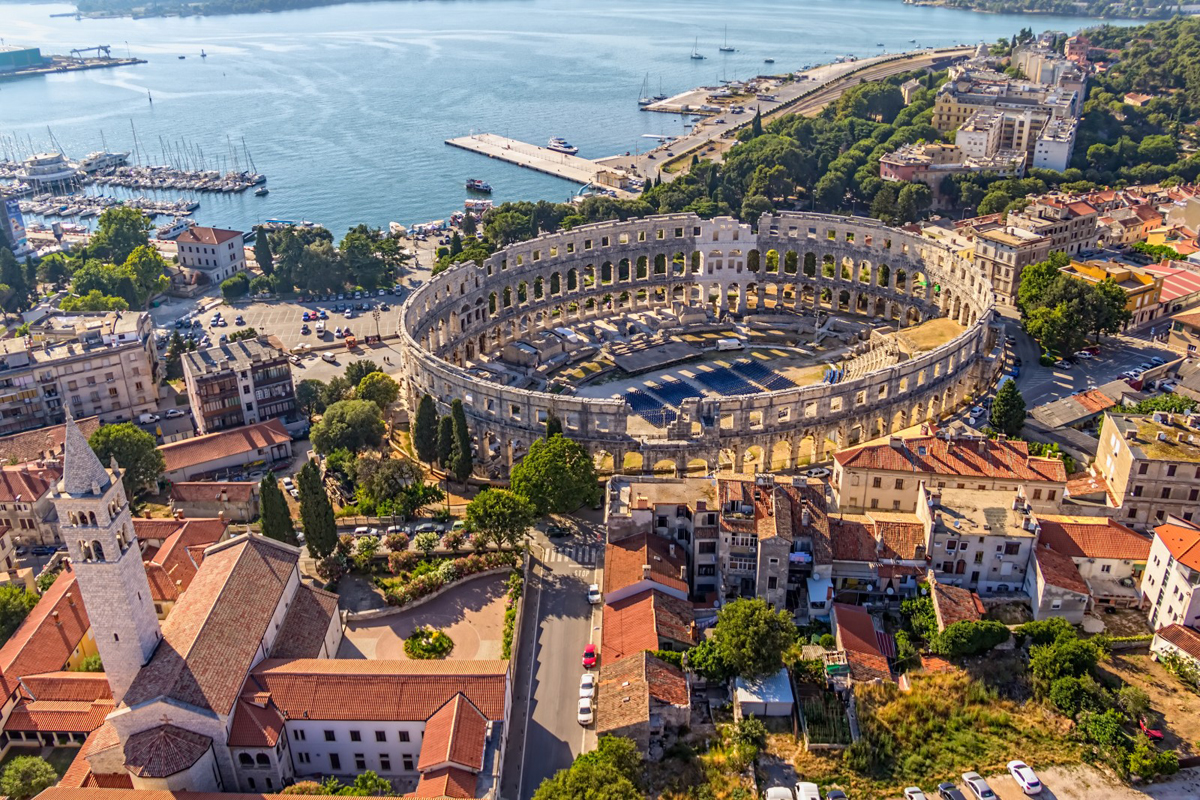
Day 2: Piran – Uvala Posoj – Pula, 46 nautical miles
On the second day, the crew sets sail for Pula, located in the Gulf of Kvarner. Pula is the capital of the Istrian peninsula and is famous for its Roman amphitheater overlooking a bay north of the old town, built from local limestone, similar to the Verona Arena or the Colosseum. In the past, it hosted gladiator shows and naval battles, accommodating up to 20,000 spectators. Today, it hosts summer theater and music events as well as the Pula Film Festival, the most important summer film event in Croatia. The Irish writer James Joyce, author of the literary masterpiece Ulysses, also stayed in Pula, and a statue dedicated to him stands on the terrace of Café Bar Uliks.
The city is surrounded by a series of rock formations that create various small beaches. A must-visit is Kolumbarica Beach, with its extraordinary-colored sea, ideal rocks for adrenaline-filled dives, and underwater caves that can be explored by swimming. Just a short walk from Marina ACI, the old town is worth a stroll, especially the historic green market founded during the Austro-Hungarian era, where, in addition to fruits and vegetables, you can find herbal liqueurs, jams, dried figs, and lavender products.

Day 3: Pula – Uvala Luka Valmizeja, 16 nautical miles
After breakfast, the moorings are cast off to reach the stunning Luka Valmizeja anchorage in about four hours. This enchanting bay consists of a deep inlet surrounded by greenery and trails winding through nearby forests. During weekdays, it is usually quiet, with only a few small charter boats returning to port at sunset.
The bay’s shape makes it well-sheltered, except from northwesterly winds. The waters are crystal-clear and full of fish, and the sandy seabed provides excellent holding for anchors, ranging from 4 to 15 meters deep, with around 8 meters in the center of the bay. A trail starting at the end of the cove leads to a supermarket about 2 km away.
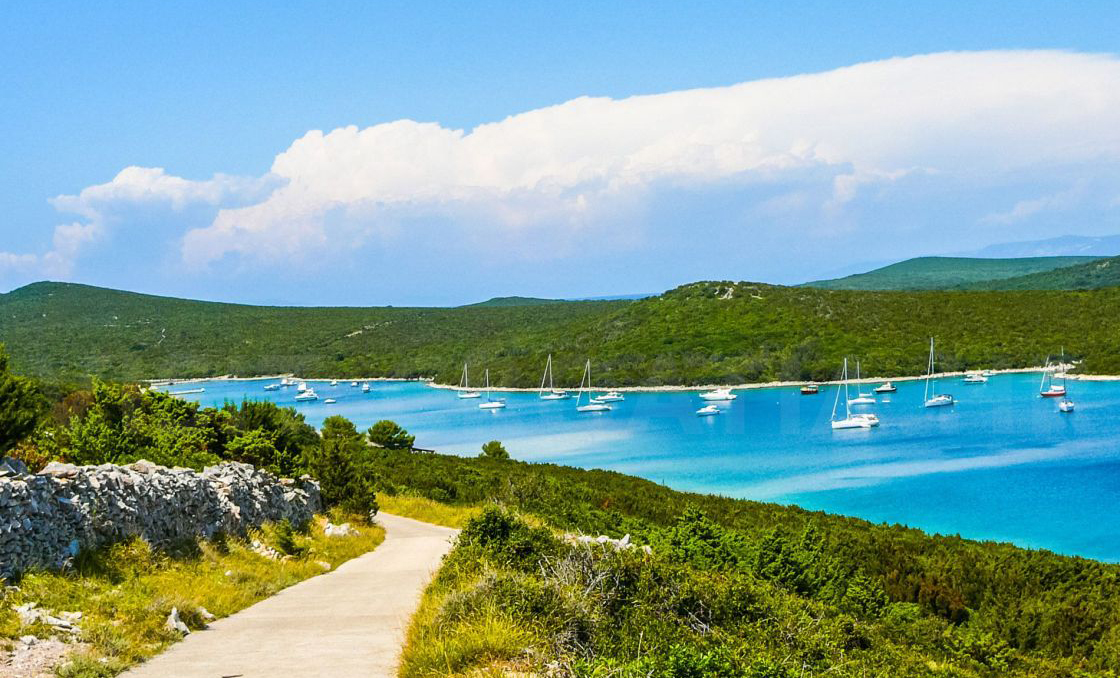
Day 4: Luka Valmizeja – Levrera – Unije, 35 nautical miles
The journey continues to explore the island of Levrera, also known as “Zeča.” It is located in the eastern part of the Kvarner, between Punta Marlera on the Istrian peninsula (12 miles west) and the island of Cres (about 1.5 miles east). The island is wild and rugged, with low rocky coasts and a single inlet, Slanci Bay, on the west side, which contains small coastal ponds. To the south, the island reaches its highest point at 65 meters, with karst terrain covered in low vegetation, home to wild rabbits.
In the afternoon, the course is set for the island of Unije, part of the Cres and Lošinj archipelago. For mooring, you can use the Unije Maracol anchorage. At the foot of Mount Kriz on the western side of the island lies the only village, surrounded by olive groves, with houses arranged in an amphitheater around the harbor. The main facades face west, with windows typically overlooking the sea and harbor. Places to visit include Vnetak Lighthouse, located on the southwestern tip of the island. Built in 1873, it consists of a circular stone tower resting on a base building, along with two storage rooms and a machine room. Other points of interest are the Malanderski fortress in the northeast and the Kastel fortress in the central part of the island.

Day 5: Unije – Uvala Plieski (Lošinj), 22 nautical miles
The following morning, we leave the harbor and sail south for about six hours toward the island of Lošinj. This island, the farthest from the Croatian coast, offers many beautiful bays. To the south, there is a stunning bay called Uvala Plieski, an anchorage with clean, crystal-clear waters teeming with small fish, perfect for spending the night. The island’s western coast also hides many great spots for swimming and anchoring. Dolphin lovers should head to Kvarnerić, the natural habitat of around 120 protected dolphins.
For those interested in ancient Greek sculptures, the Apoxymenos Museum offers an innovative and accessible presentation of the Apoxyomenos story. Another must-visit is Lošinj’s aromatic garden, offering a wide variety of local artisanal products, from liqueurs to aromatic sea salts, scented sachets, and teas.

Day 6: Uvala Plieski (Lošinj) – Rovinj, 55 nautical miles
We set sail for Rovinj, a picturesque town nestled on a small peninsula extending from the Istrian coast into the Adriatic. We dock at the ACI Marina, which has 196 berths and excellent nautical services. The old town, dominated by the imposing Church of St. Euphemia, charms visitors with its narrow streets, panoramic views, romantic and sleepy atmosphere, and the deep blue sea as a backdrop. The ancient city walls had seven gates, three of which still remain today: the Gate of St. Benedict, La Portica, and the Gate of Santa Croce. Don’t miss the eco-museum Casa della Batana, a permanent exhibition dedicated to “batana,” the traditional flat-bottomed boats of the region.
Rovinj has an incredible variety of beaches, coves, and bays. The most beautiful include Porton Biondi, backed by a wide green meadow; Lone Bay, a local favorite; Baluota, beautifully illuminated at night; and Palù Beach, a wild rocky bay inside a bird reserve. For a bit of shade and relaxation, visit the Punta Corrente Forest Park, easily reachable from the town center via a scenic seaside walk. Rich in native plants and meadows, it’s perfect for leisurely walks, cycling, and more intense sports like running, gymnastics, or free climbing. For children, Mini Croatia is a fun theme park presenting all major Croatian sites and attractions in miniature.
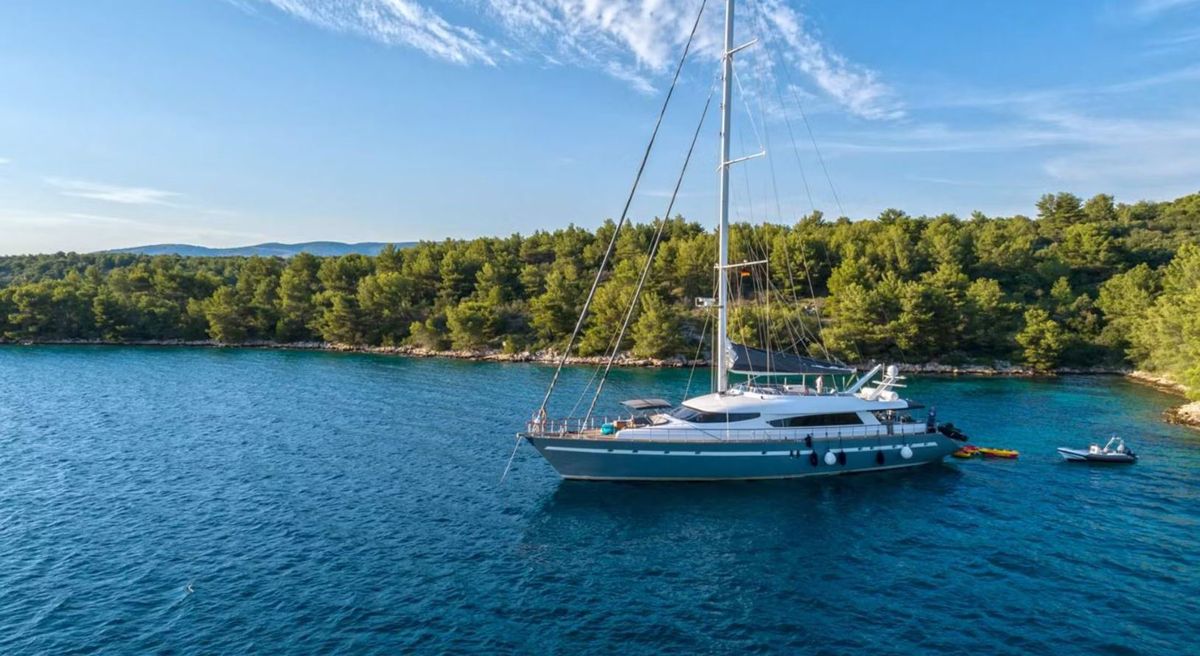
Day 7: Rovinj – Izola, 33 nautical miles
On the final day of this Slovenia–Croatia sailing itinerary, we sail approximately seven hours back to our starting base in Izola. There is plenty of time to admire once more these magnificent coasts, the crystal-clear waters, and to soak in the peaceful and welcoming atmosphere of these magical, historically rich places.
You May Also Like
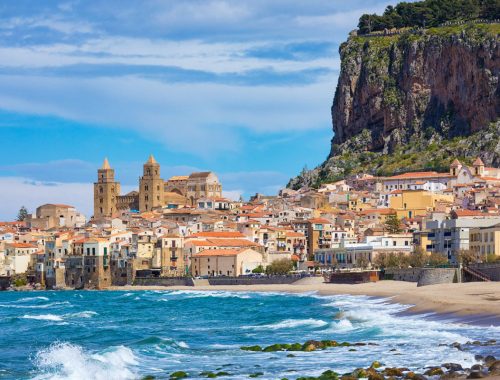
Cefalù: Here’s why sailors adore this splendid Sicilian stopover
12/12/2025
Magical Majorca: idyllic bays, historic villages and turquoise sea
09/03/2024